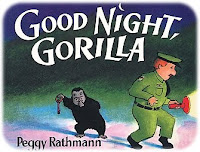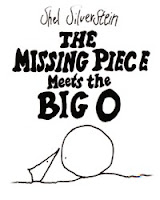Welcome to a new edition of Fabulous Five! I am really pleased to welcome Lee Carr, a newcomer of the picture book world to Library Mice. Lee is the writer of Monster Baby, which is illustrated by Jane Massey , and was published last month and which I reviewed here.
Lee Carr was born and raised in America’s midwest and has been living in Europe for many years. She graduated from Vanderbilt University with a Bachelor of Arts in Creative Writing before acquiring a variety of professional experiences including creating marketing campaigns (web, print and radio), web design work, working in bookshops and a lot of editorial freelance work. Her freelance work includes proofreading, sub-editing, copy writing, acting as production editor, acting as commissioning editor, and writing articles and book reviews for various publications, from Ink to Elle.
Five Fabulous and Brilliantly Simple Picture Books
It takes a special talent to make a character dear without using a single word. Or to incite side-splitting giggles time and time again with a few words and line drawings of a pig and an elephant. But the following author-illustrators make it look easy. The joy of reading a story with minimal text or minimal illustration or both, is that when it’s done well, the strength of the story shines with simple brilliance.
A Boy, a Dog and a Frog
Mercer Mayer
Not a single word of text is used to chronicle a boy’s adventure with his dog as they set off to capture a frog. With his high rubber boots, his net and his pail this boy is nothing shy of determined and he becomes frustrated with the frog who is equally determined to maintain his freedom. The characters are so expressive and the relationships and action in these black-and-white spreads so pronounced, that you feel as though you have stepped right into the heart of this boy’s childhood. This book is the first in a series of six featuring these characters, whose stories are all authentic and engaging.
Pancakes for Breakfast
Tomie dePaola
Mmmm. Nice hot pancakes on a snowy winter day – yum. If only you have the right ingredients to make them . . . but the woman central to this story doesn’t and she has to acquire them. She gets eggs from the hen house, milk from the cow, maple syrup from a neighbor before – uh oh – her cat and dog upset the ingredients she was gathering on the table. Will she ever get her pancakes? Using words sparingly – in sharing the recipe, labelling the jug with ‘milk’, a meaningful saying decorating the wall, etc. – they are not critical to the story but complement it and give it depth. This gratifying tale is told with the pictures but a few carefully placed words make it even more satisfying.
Good Night , Gorilla
Peggy Rathmann
A gorilla holding keys is always a good start to a book and we suspect from the cover that mischief lies ahead. The gorilla lets all the animals out of their cages and they calmly follow the unknowing zookeeper back home and into his room. Will order prevail? Letting the pictures tell the story almost entirely, this book is entertaining the first time you read it. And when you reach the end the child is happy but there is something, just something, the child feels he may have missed. So you read it again. And again. And again, and it is a joy to see children discover the elements that bring the story together – “The keys are the same colors as the cages! The animals are saying ‘Good Night’! Someone ate the banana!” and so on and so on. Wonderful!
We Are in a Book!
Mo Willems
Piggie and Gerald (an elephant) star in a series of Piggie-and-Gerald books and when they feel strange because someone is looking at them, they discover they are in a book. The story continues with Piggie hanging from a word bubble, Piggie showing Gerald how she can get the reader to say a word, and lots of laughter from readers (and Piggie and Gerald too!). In all of the Piggie-and-Gerald books, the illustrations consist almost entirely of line drawings of Piggie and Gerald and their color-coded word bubbles. These are great early readers but younger kids love the expression and silliness of the characters too. Willems is able to strip away almost everything and put together fun, original stories with a lot of emotion so simply that you’d be forgiven for thinking it’s magic.
The Missing Piece Meets the Big O
Shel Silverstein
Of course drawing an isosceles triangle – the Missing Piece – makes for an interesting character! Add a circle (the Big O) and a line to represent the ground and you have the basis for the illustrations of this entirely black-and-white book. At over 100 pages, it’s often suggested for older kids, but many pages don’t have any text and others just a sentence or two. Younger children appreciate this book (and it’s predecessor, The Missing Piece) due to its simplicity and the dynamic nature of the Missing Piece, but it also contains a valuable lesson. Not many books can boast content that entertains pre-schoolers but that can also serve as a gentle life lesson for adults too. With engaging characters, a worthy moral story, simple drawings and a few laughs, this book is a masterclass in picture book simplicity.
Thank you also to Lisa at RHCB.











